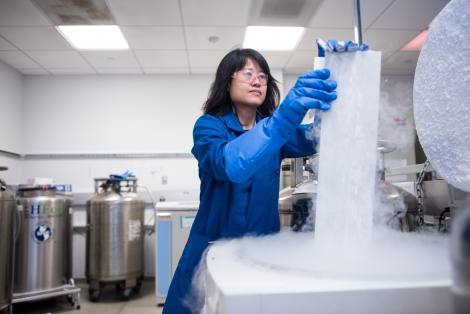
Kevin Shannon, MD, has been studying the genetics of familial monosomy 7 disorder for 30 years.
A decades-old medical mystery has been solved by researchers at UC San Francisco and St. Jude Children’s Research Hospital in Tennessee, who have discovered a pair of inherited genetic mutations underlying a familial blood disorder that sometimes leads to leukemia.
The research, based on analysis of the DNA of 16 siblings in five families, reported that some children with these mutations recover spontaneously, and pointed to additional genetic markers that may help physicians avoid invasive and dangerous bone marrow transplants for patients with milder forms of the disease.
The puzzle surrounding the disorder dates back more than 30 years to when UCSF oncologist Kevin Shannon, MD, was a research fellow in the lab of renowned UCSF geneticist Yuet Wai Kan, MD, FRS. Shannon and colleagues encountered several families in which multiple children can develop low blood cell counts (myelodysplasic syndrome, or MDS) and a form of acute myeloid leukemia (AML), a severe and often deadly blood cancer. These patients also had one rather than the usual two copies of chromosome 7, a condition known as monosomy 7.
In 1989, using then-cutting-edge techniques, Shannon successfully narrowed down the region of chromosome 7 that was responsible for the condition, called familial monosomy 7 syndrome. Efforts to identify the specific genes involved were unsuccessful at the time, but Shannon and his colleagues started collecting and banking blood samples from other families with a similar medical history.

The current study, published July 26, 2018, in JCI Insight, was spearheaded by Shannon lab researcher Jasmine Wong, PhD, who had read Shannon’s 1989 paper before joining his lab, and has spent the past 10 years trying to understand the genetics that drive the disease.
“Reading that paper, I thought about what it must be like for parents to have more than one child get this really severe form of leukemia,” Wong said. “Maybe you’re trying to find out whether your second child could be a potential bone marrow donor for your first child, and then it turns out they both have the same condition. It’s heart-breaking, and also a really puzzling scientific mystery.”